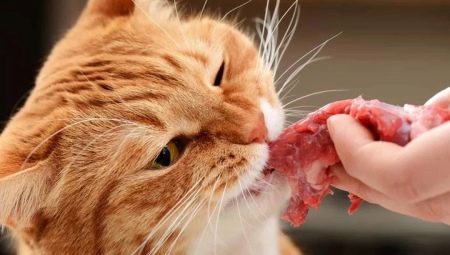The cat is one of the most beloved pets. Cat lovers argue: the one who does not have cats does not like cats. These charming graceful creatures are so positive and attractive that many owners sincerely consider them family members, spend time with pleasure in the company of furry pets, and communicate with them “on equal terms”. In order for the pet to live happily ever after, have luxurious shiny hair, be healthy and energetic, one must clearly know how and what to feed it with.
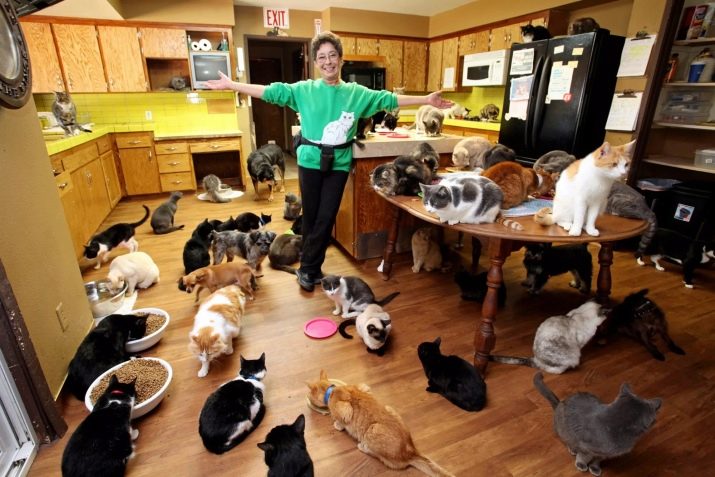
Which is better: natural or dry food?
Even before the appearance of a new “family member” in the house, one should decide on the choice of feeding method. During evolution, the basis of their diet was food of animal origin. Cats are carnivores, predators in terms of behavior and nutritional characteristics. There are no unequivocal recommendations as to which food to use - industrial (dry, liquid), natural or mixed, but there is one general rule: the diet should be balanced and beneficial for the pet, taking into account the breed, age and physical condition of the animals. Naturally, that the diet of an adult cat may not be the same as the diet of kittens.
You must understand that natural food from our table and natural cat food are not the same thing. If natural feeding is planned, then food will have to cook separately specifically for the pet. Not all owners will have time to properly prepare balanced dishes for cats.
This is a significant minus of natural nutrition.But an undoubted big plus is knowledge of the composition of food (homemade food without any chemistry), confidence in the freshness of products that the owners themselves buy and cook from them.
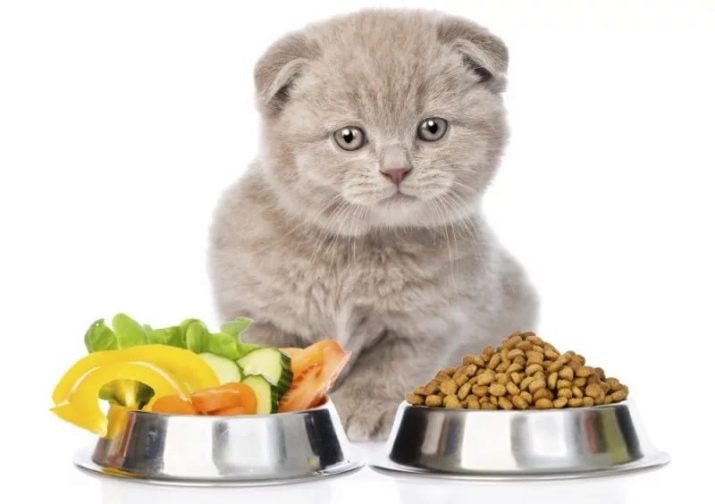
Under the conditions of modern realities, for many owners an important plus is the fact that keeping a pet with natural nutrition is cheaper than feeding a cat with high-quality food of super-premium and holistic classes.
Trading networks offer a wide range of feeds of various composition and cost. Of course, industrial feeds are convenient and save a lot of time, but you should not choose them for continuous use if there are financial difficulties that do not allow you to buy expensive cat food. Cheap feeds of economy class often not only do not meet the energy needs of the animal, but can also be harmful to the health of cats.
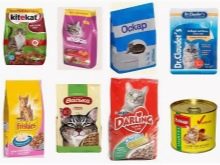
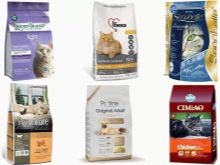
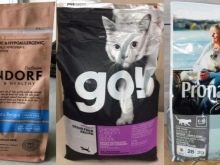
Important components of a cat's diet
It is enough to look at the cat to determine how it is fed. With proper nutrition, animals have a healthy appearance, luxurious coat, lively shine in the eyes, playfulness and cheerful mood.
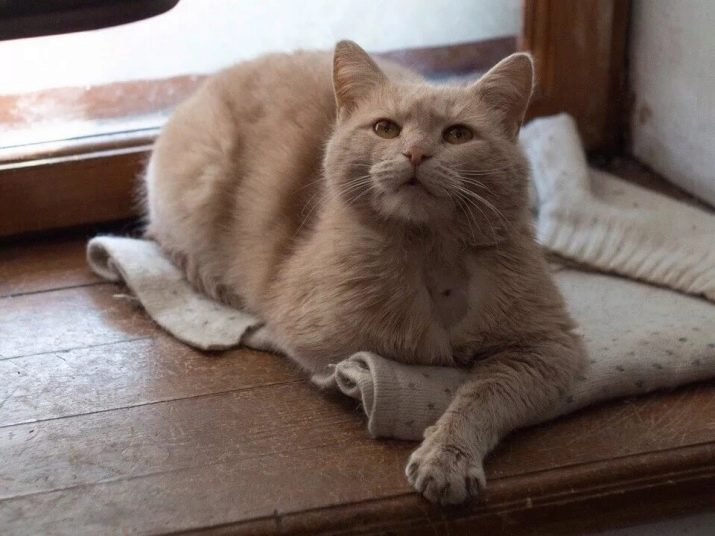
With malnutrition in animals, a depressed state, a dull look, excessive drowsiness, loss of shreds of wool, dandruff, often obesity and diarrhea.

With any method of nutrition, the cat's diet should contain A complete set of components necessary for the normal development of kittens and the full life of adults. Obligatory components of the diet are proteins, fats, carbohydrates, amino acids, mineral salts, trace elements, vitamins.
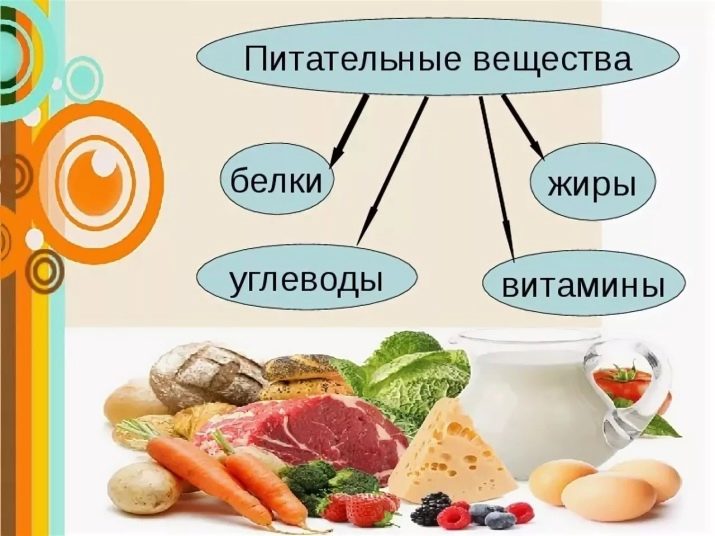
Proteins (proteins)
Cats are natural predators. In the cat’s body, “building” protein is not produced independently. The main supplier of animal protein is meat of various types. In the natural diet of cats, it is the main part and is the main source of replenishment of nutritional resources. Proteins of animal origin are well absorbed by the body of predators. In addition to meat, they are found in cottage cheese, eggs, kefir and other dairy products.
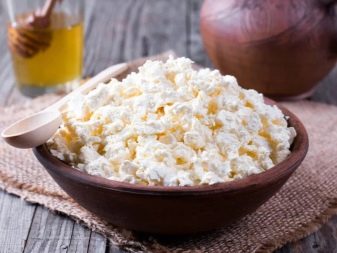
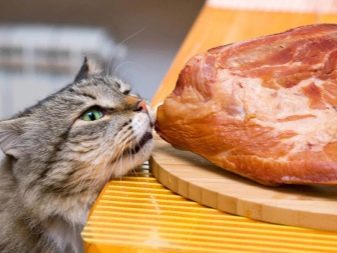
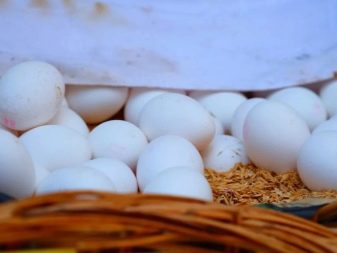
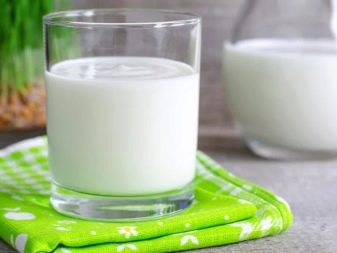
Fats
This is a kind of "fuel" for the cat, a source of energy that supports the cat's constant healthy activity. Fats improve the taste of food, enrich with vitamins A, D, K, E, affecting the state of vision, skin and coat, reproductive function, the formation of the musculoskeletal system, blood coagulation and calcium absorption. The optimal proportion of fat in the diet is approximately 20%. If there is not enough fat in the diet, cats should be given fish oil.
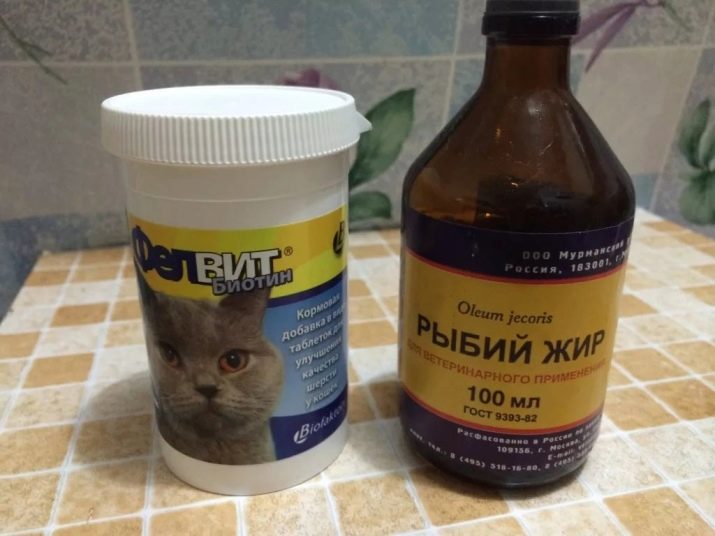
Carbohydrates
Important as an additional source of energy for all mammals, including the cat family. Glucose has a beneficial effect on brain function. Plant fiber carbohydrates normalize the gastrointestinal tract, promote the elimination of toxins and create a feeling of satiety in cats. The need for carbohydrates is small, but their usefulness in the normal functioning of organs and systems is undeniable.
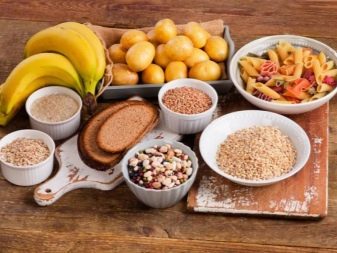
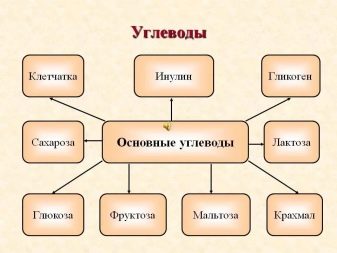
Minerals and minerals
In the cat's diet, mineral substances and trace elements must be contained in full and in the right proportions. A sufficient number of bones and teeth are needed phosphorus and calcium - The most important of the minerals. In addition, the body needs trace elements such as iron, magnesium, potassium, manganese, iodine, sodium and others. All this is necessary for the health of the cardiovascular system and musculoskeletal system.
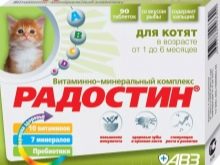
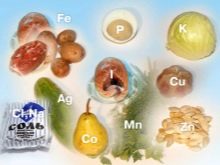
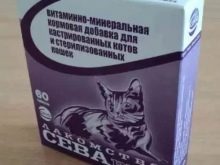
Vitamins
Vitamins affect the growth and development of the body, strengthen the nervous system and immunity, participate in metabolism, accelerate wound healing, maintain vision, maintain healthy skin and coat of cats. With natural feeding daily give pets complex vitamins containing essential fatty acids (sold in veterinary pharmacies).
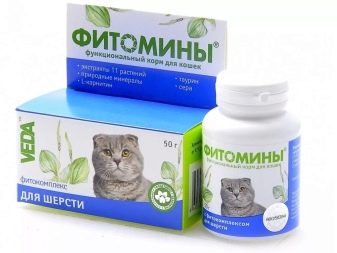
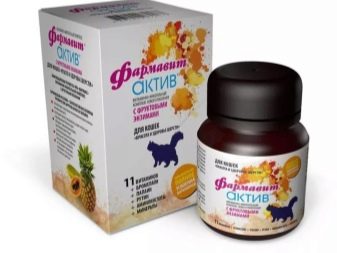
Water
Like all living things, water for cats is necessary. Feline ancestors lived in deserted places, hence the ability of pets to economically spend and maintain moisture in the body.But nevertheless, for the normal functioning of all organs, The cat should have free drinking water around the clock. A bowl of water should be placed close to the bowl of food, but away from the tray.
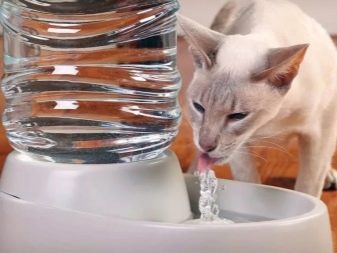

List of useful products
What can cats give:
- lean beef meat, calf meat;
- turkey and chicken meat;
- meat baby food;
- rabbit meat;
- meat offal (liver, lungs, heart 1 - 2 times a week);
- Boiled sea fish without bones (1 time per week);
- cereal dishes (oats, buckwheat, semolina, rice, wheat, barley, oatmeal);
- dishes with vegetables (beets, zucchini, lettuce, pumpkin, dill and parsley);
- dairy products (cottage cheese, yogurt, kefir, yogurt, bifid products);
- vegetable oil (olive, linseed, sunflower, corn);
- boiled egg yolk;
- sprouts of germinated wheat or oats.
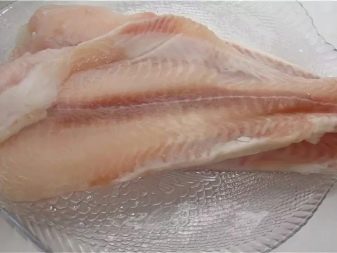

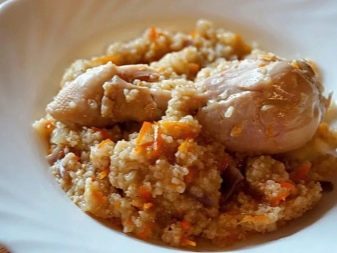

These useful products can be safely used for the preparation of natural feed. Of course, in order for the cat to actively eat food, you will have to make an effort and go to some tricks. Most cats are not happy with vegetables, they will not eat empty porridge, many do not like cottage cheese. These components must be combined with meat, and add kefir and egg to the curd - it will turn out tastier, and the picky pet will eat food with pleasure.
Meat baby foods are mainly fed to kittens and aging animals, as well as cats with stomach problems.
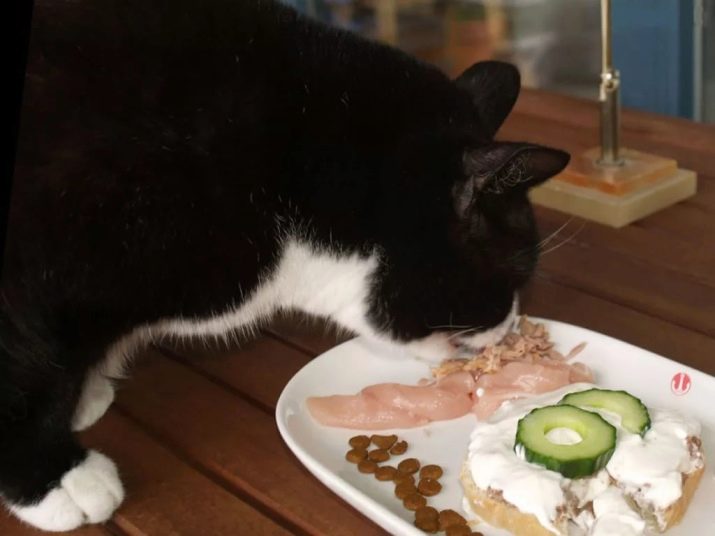
Norms and diet
Variety is a prerequisite for natural nutrition. At 2/3 it should be meat or baby meat, and 1/3 should be the rest of the composition (sour milk, cereals, vegetables). A well-prepared food should be not only full in composition, but also tasty, then cats will be happy to eat it.
According to the recommendations of felinologists (specialists in domestic cats), The daily food intake rate for healthy adults is 7.5% of the animal’s body weight. For example, a cat (cat) weighing 4 kg should receive 300 g of food per day. The above standards are average and depend on the breed of the animal, its state of health, the presence of diseases, age, taste preferences.
The norms are adjusted on the advice of specialists in order to optimize the diet for a specific situation.
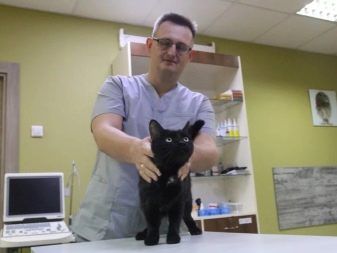

A set of products is determined from the norms of consumption of the main nutrient components per 1 kg of live weight of the animal: protein - 10 g, fat - 2 g, carbohydrates - 2 g Based on this, diets are compiled. The complexity of developing a menu for a cat at home is a significant minus of natural feeding, but getting comprehensive advice and, if necessary, practical help from a felinologist these days will not be difficult.
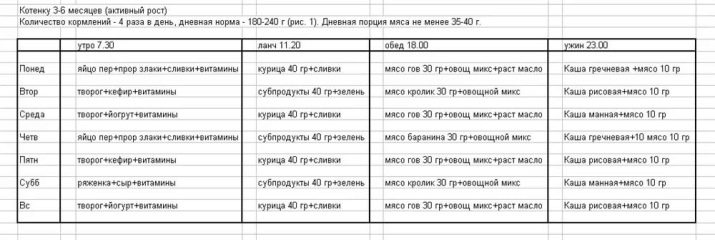
Making all cats eat the same food is impossible. Some pets love variety, others prefer 2-3 food they like. The saying "do not argue about tastes" is relevant for cats as well as for people. If the cat did not like the dish, she will not eat it and will starve until she is offered the usual food.
It is necessary to teach animals to eat at the same time from an early age. In most cases, kittens get into a new home at the age of three months. The feeding regime of such a kitten is 4-time with a gradual transition to a one-year-old age for 2 meals. Adult pets should be fed during high activity hours in the morning and evening (at 8 - 9 in the morning and at 6 - 7 in the evening).
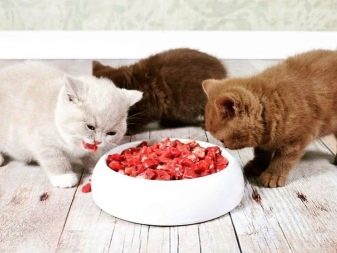
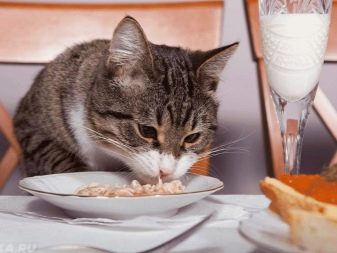
Feeding rules
Natural stereotypes of cats behavior determine the main nutritional criteria:
- cats are fastidious and will not eat stale food;
- the smell of food is of paramount importance, as the sense of smell in cats is stronger than the taste, the cat will immediately recognize the bad smell of food and will not touch it;
- before giving the cat raw meat, it is necessary to prepare portions and place them in the freezer for 3 days (this will destroy almost all the parasite larvae and dangerous microorganisms if they were in the meat), then slowly thaw at room temperature;
- serving food to the cat should be warm (neither hot nor cold), as the natural habit of eating prey in a warm form, as soon as it is caught, has been fixed in the feline family during the centuries-old evolution at the subconscious level;
- you can’t give the cat milk and meat at the same time, it is fraught with stomach problems;
- leftovers should be removed from the bowl after feeding;
- it is better to feed and drink a cat from ceramic or glass dishes, be sure to wash the bowl after each feeding, as harmful microflora quickly develops in the remnants of food;
- clean water and green grass for the cat should always be freely available.
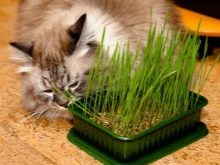
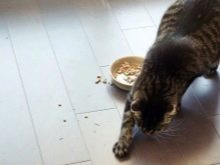
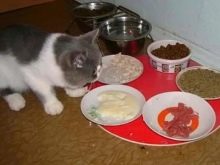
What can not be fed?
Natural products in the cooking process should not be subjected to any processing except cooking. You can’t feed cats fried dishes, sausages, canned goods, pickles and marinades, sweets, citrus fruits, flour products, dishes with spices and spices. Many of them contain flavor enhancers, emulsifiers, colorants, salt and other nutritional supplements. What is tasty (but not always beneficial) for humans and for the health of cats can be detrimental.
It is not recommended to give cats raw meat brought from the market, it may contain hormones, antibiotics, food chemicals, so it is better to boil such meat in order to destroy harmful impurities. Pork, goose and duck meat are also contraindicated in cats as too fat.
Raw fish can become a source of infection with helminths (worms). Some of them are difficult to breed, so it is better not to give cats raw fish. Of vegetables, the forbidden include tomatoes, eggplant, garlic, onions, they contain dangerous substances for the cat family.
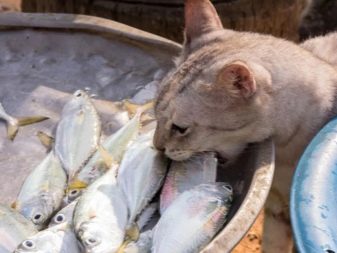
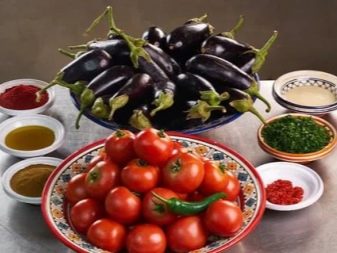
Cat recipes and menu design
In the wild, cats eat their prey completely. Together with the meat of rodents and birds, the internal organs, bones, contents of the victim’s stomach, blood, part of the hair and feathers enter the stomach. Cute homemade pussies are also predators, so when drawing up the right menu, you should strive to bring it as close as possible to the "wild" one. The main condition is the predominance of animal proteins and fats, all other components of a much smaller volume.
It is necessary to study well what can be included in the composition of a cat's menu in order to get a full balanced diet, which foods can feed pets in raw form, and which only after heat treatment.
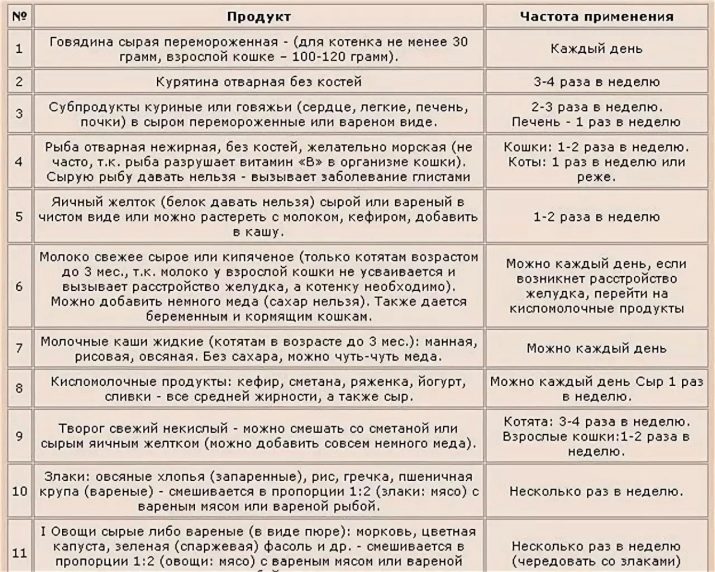
Here is one of the options for an approximate natural menu for the week.
- Monday. In the morning - ground beef, grated vegetables; in the evening - kefir (or ryazhenka), an egg.
- Tuesday. In the morning - chicken (slices), cereal porridge; in the evening - offal, ½ teaspoon of vegetable oil, chopped lettuce.
- Wednesday. In the morning - beef heart, grated squash; in the evening - cottage cheese.
- Thursday. In the morning - boiled chicken slices with porridge; in the evening - chopped beef with a few drops of olive oil, an egg.
- Friday. In the morning - boiled beef with grated vegetables; in the evening - dairy products.
- Saturday. In the morning - boiled beef with porridge on the water; in the evening - offal, greens.
- Sunday. In the morning - boiled turkey, grated vegetables; in the evening - boiled boneless sea fish, crushed sprouts of germinated cereals.
The amount of each product is calculated according to the norms per 1 kg of a pet’s weight, taking into account its age. The average norm is about 50 g of products per 1 kg of body weight. For a varied nutrition menu, you need to adjust and change the set of products, but the principle of balance should not be violated.
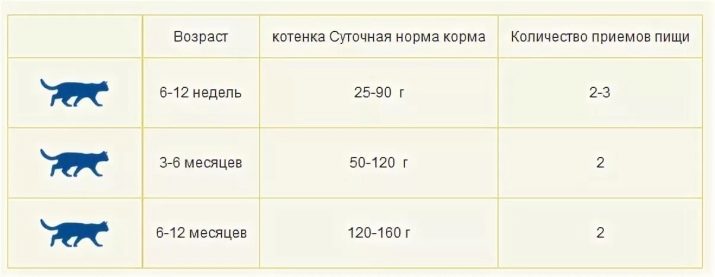
Good meat is not cheap, but you can provide a home-made predator with a complete diet without spending too much money. This will help helpful proven recipes for cat preparations.
- Meat mix. Any non-banned meat products will do. All components (chicken breasts, hearts, stomachs) are washed with cold water, cleaned of visible fat and films, cut into small pieces, mixed, folded in cups and placed in a freezer. Before use, thaw at room temperature.
- Chicken heads and necks. Many are horrified at the thought that their favorite will eat this unsightly food, but in vain. It is these products that the cat will eat with pleasure without harm to health and with great benefit, if properly prepared. After washing, it is necessary to remove the skin from the heads and trim the beaks, and also remove the skin and fat from the neck parts. Heads should be cut in half along the neck, cut into necks of 1.5-2 cm. It’s good to knock on the bones with a hammer. You can form portions of the heads and necks of about 50/50, you can lay them separately in plastic boxes and freeze.
- Cutlets. The main share in the composition is various meat products (rabbit fillet, beef heart, offal of turkey or chicken). Add very little cereals and vegetables so that the cat does not feel a “forgery” and does not refuse such food. Pass the components through a meat grinder with a large grill, stir well, form cutlets and remove to the cold.
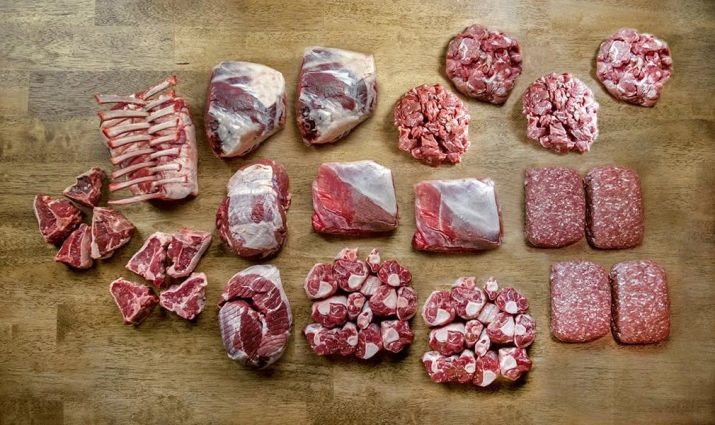
The nutrition of domestic cats is an essential element in keeping animals. When feeding them homemade home-cooked food, one must carefully monitor the condition of the pet in order to timely replace the diet in the diet, which for some reason does not suit a particular cat. If a four-legged “family member” constantly resides in the house, you must treat him with all responsibility, properly feed and care.
An unreasonable attitude will lead at least to health problems, and in the worst case to an even more sad outcome. The owner should always remember that the fate of the pet is in his hands, and he is responsible for those who tamed. In conditions of constant care, a furry friend will live a long healthy life.
On the proper nutrition of cats, see the next video.
